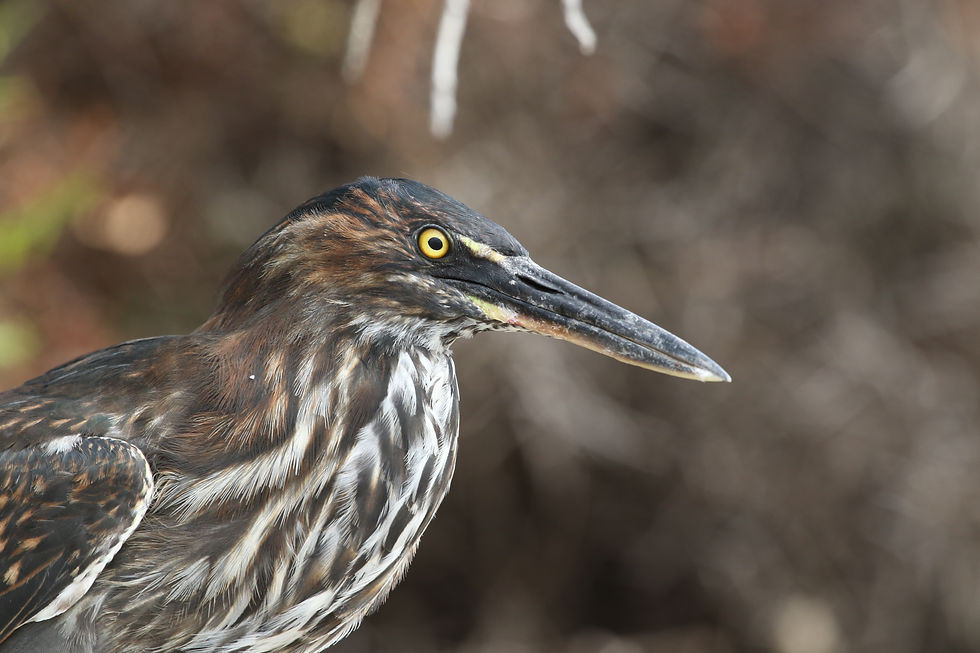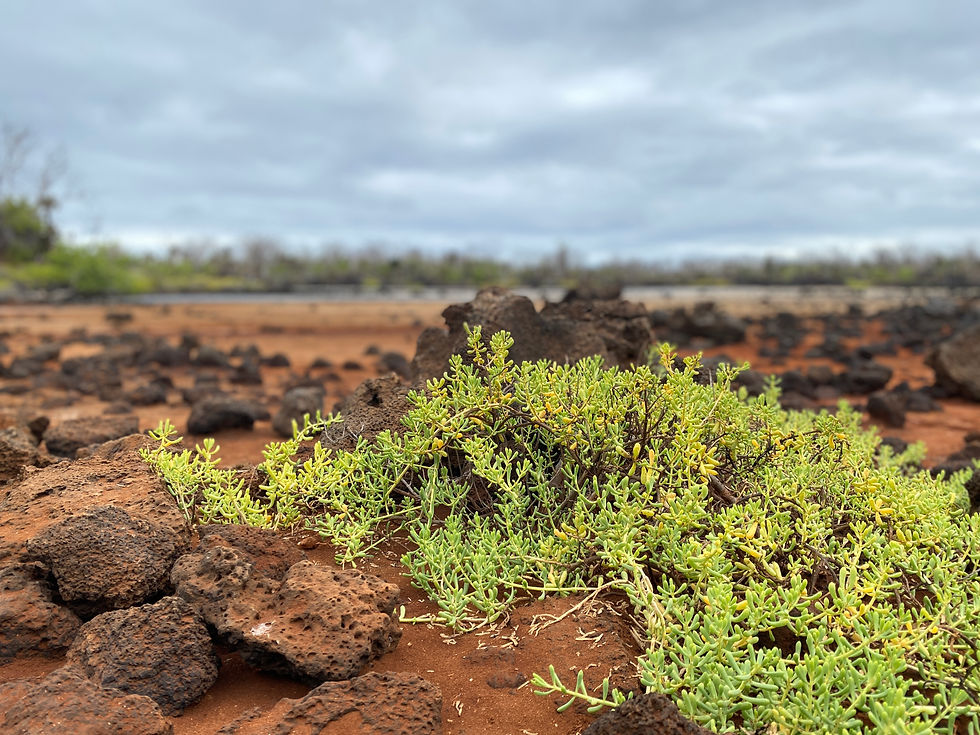
The Land That Time Forgot...
The GALÁPAGOS
The Galápagos Islands truly is an amazing landscape full of wildlife that can't be seen anywhere else in the world. This volcanic island archipelago is home to at least 85 species of birds, 45 of which are endemic to the islands. The Galápagos is also home to several species of land and marine iguanas, lizards, turtles and tortoises, sea lions, whales, and marine life in abundance.
During my trip to The Galápagos, I had the opportunity to photograph numerous species and document their habits and habitats. Below is my collection of some of these photos that I wanted to share with you. This is a work-in-progress, as I will continue to add more photos and text to those photos to educate and demonstrate the diversity of wildlife found in this amazing world.

The Nazca Booby (Sula granti) is a large seabird of the booby family, Sulidae. It is native to the eastern Pacific region from Baja California to the Galápagos and the western coast of South America. The Nazca was once considered a subspecies of the Masked Booby until it was recognized as its own species due to its behavior and genetics in 2002.

The word "booby" originates from the Spanish word "bobo", which means fool or clown. This is quite fitting because the Nazca Booby (and other boobies alike) walks in a clumsy manner. But don't let that "fool" you... they are quite elegant in flight.

During our trip to The Galápagos Islands, we had the opportunity to visit Genovesa Island, which had been closed to outsiders for quite sometime in order to restore the breeding grounds of many of the archipelago's birds. The Nazca Booby goes to Genovesa to breed, nest, and introduce the next generation of their species to the world. This mating pair were entranced in their mating dance when I made this shot.

This beautiful pair of Nazca Boobies posed for a welcomed photo opp. It was a real joy to watch these birds in their natural habitat on The Galápagos Islands. With no real predators, viewing and interacting with the wildlife here was a wildlife photographer's dream!

Don't be "fooled" by these birds... although somewhat comical to watch, they are real beauties in nature. This Nazca Booby was walking down the path, heading right towards our group. We stopped to let it pass by. There's NO fear from the wildlife in The Galápagos, as there are NO natural predators here.

The title of this photo says it all... "white, clean, and neat." The Nazca Booby has all white plumage with a black mask. They are the largest in the family of boobies, standing a little under 3 feet tall with a wingspan of almost 5 feet.

The Nazca Booby typically lays 1-2 eggs. The unfortunate reality, as it is with nature, the young have to fight to survive. And this all begins in the nest. When 2 eggs are laid, one egg typically hatches about a week earlier than the other. The older sibling will most likely kill the other so it can receive more food. This is called "siblicide", and is very common amongst birds... and I see this happen often with the Great Egrets in Florida.

The Galápagos Green Sea Turtle is a close relative to those same green sea turtles that we have in Florida. This was a real rarity... to see one (probably a female) on land during the day. My best guess is that "she" had been laying eggs in the sand dunes during the early morning and stopped to rest before heading back into the sea.

As with all sea turtles, their patterns and colors stand out. This beauty was no exception.

As we passed through East Machias, Maine on the way to Lubec, I noticed a flock of seagulls diving in the creek for lunch. I stopped to make some shots and caught these two herring gulls going "crazy" on the rocks.


A group of wood stocks were gathering and bickering while roosting on a mangrove tree at Wakodahatchee Wetlands in Delray Beach, Florida.




Wakodahatcee Wetlands in Delray Beach, Florida is one of the best places to witness many of Florida's birds in their full glory during breeding season. These two blue herons were in full mating ritual and displaying their love for each other.

This photo of a parent great egret feeding its young ones has been nationally recognized and featured in several local magazines in South Florida. This photo was made at Wakodahatchee Wetlands in Delray Beach, Florida during breeding season.
















































































